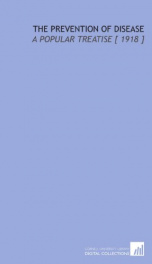veterinary materia medica and therapeutics

Purchase of this book includes free trial access to www.million-books.com where you can read more than a million books for free. This is an OCR edition with typos. Excerpt from book: combined. When spasm of the bronchioles exists, as in asthma, and sometimes in bronchitis, the nitrites are paitic- ularly valuable. Drugs Acting on the Urinary Organs. Diuretics are drugs increasing the secretion of urine. Three factors are concerned with the urinary flow. (1) The composition of the blood. (2) The state of -local (renal) and general blood pressure. (3) The activity of the renal cells. The renal mechanism influenced by drugs comprises : (1) The Malpighian glomerides, which excrete water, salts and some excrementitious matters from the blood by osmosis. Their activity depends upon their blood supply, which is increased by agents causing dilatation of their afferent vessels, or contraction of the efferent vessels; and by drugs increasing general blood tension. Drugs augmenting the mass of blood and tension in the Malpighian bodies enlarge the surface of cubical epithelium covering the capillary loops and promote osmosis of fluid into the cavity of the Malpighian capsule. , (2) The nucleated polyluidral cells lining the convoluted tubes. These secrete the solid products resulting from the retrograde metamorphosis of nitrogenous bodies circulating in the blood, as urea, together with water. (3) The constricted Mks.These regulate the urinary secretion by either impeding its passage by constriction of their walls, thus aiding absorption, or by their active peristalsis facilitating the flow of urine. (4) Nervous mechanism.This governs the secretory activity of the cells of the convoluted tubes, regulates the tension in the vessels of the malpighian bodies, and possibly controls the unstriped muscle of the constricted tubes. It comprises: (a) Four medullary centres. Vasomotor I Vasodilator centres (controlling renal vessels)! Vasoconstrictor ...
Info about the book
Author:
Series:
Unknown
ISBN:
1172563527
Rating:
3.5/5 (4)Your rating:
0/5
Languge:
English
Users who have this book
Users who want this book
What readers are saying
What do you think? Write your own comment on this book!
write a commentif you like veterinary materia medica and therapeutics try:
Do you want to read a book that interests you? It’s EASY!
Create an account and send a request for reading to other users on the Webpage of the book!



